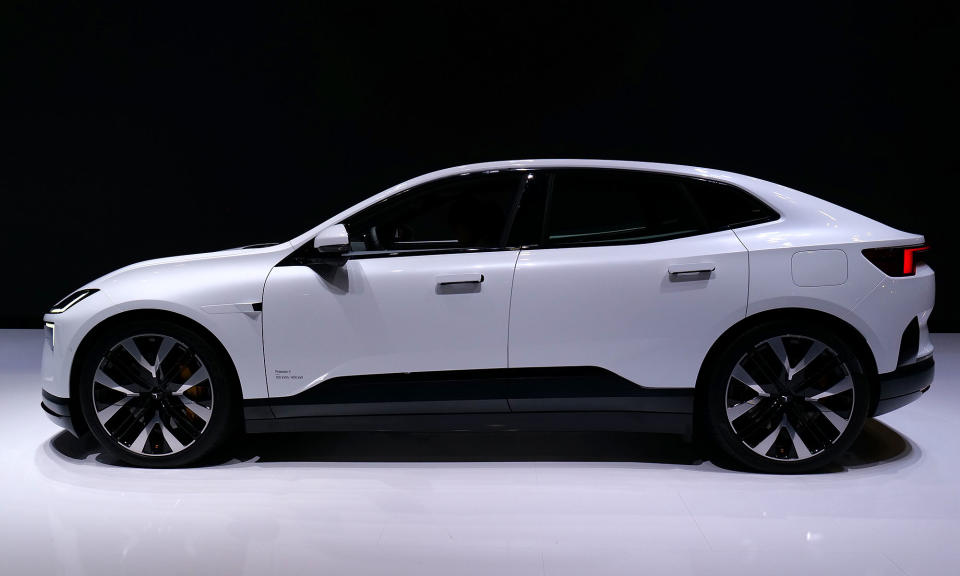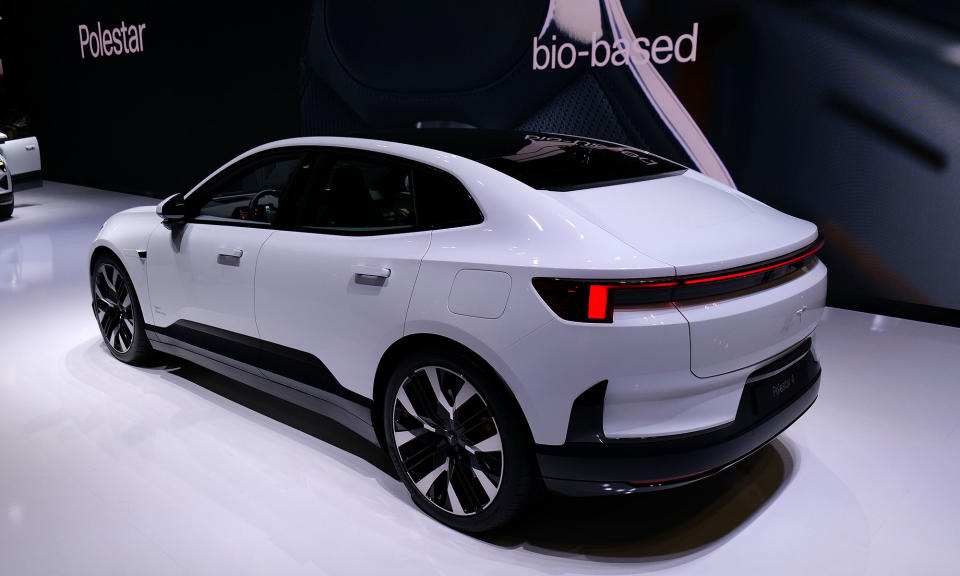Last year, Polestar announced its most practical EV yet in the Polestar 4. But this week, during the vehicle’s North American debut at the New York International Auto Show, we finally got an official launch price and a chance to check out its most controversial feature.
Positioned as a slightly smaller and more affordable version of the Polestar 3, the company’s latest EV SUV has a lot riding on it as it looks to be Polestar’s most appealing mainstream offering to date. The good news is that while the cost was initially said to be around $60,000, launch pricing actually comes in slightly below that. The Polestar 4 starts at $56,300 (including destination) for the standard long-range single-motor version with around 300 miles of range while the dual-motor AWD variant with around 270 miles will set you back $64,300.

Granted, that’s still significantly higher than many of its rivals including the Tesla Model Y which starts at $43,900 (before federal incentives) or the Hyundai Ioniq 5 at $47,400. But after talking to Polestar CEO Thomas Ingenlath, I got the sense that the company is kind of OK with that, as they view the 4 as a more approachable but still very premium offering among EV SUVs.
On the outside, the Polestar 4 retains the rakish good looks we’ve seen on its larger sibling but with a few twists. Its nose is a bit pointier and more sloped, and it’s a bit less complicated too as it doesn’t have a front wing like the 3. The Polestar 4 is still based on the low-slung coupe-like SUV shape that’s all the rage right now. However, to ensure that rear-seat passengers have ample room, Polestar has forgone a rear window entirely, opting instead for a simple sheet of metal along with cameras and a rearview mirror with an embedded display.

At first, this might seem like a step too far, even for an EV that might not be beholden to the same burden of tradition as gas cars. But Ingenlath explained that there are a lot of advantages that come from this design change. By not having a rear window, Polestar was able to push the rear seats back further while maintaining ample headroom despite the sloping roofline, which creates a spacious cabin. I had no trouble climbing in and out and even with the front seats pushed as far back as possible, I still had ample legroom in the back. Furthermore, unlike most cars, the Polestar 4’s rear seats can recline, which adds even more of a loungey feel.
1 / 14
Another major advantage is one of practicality. As it is, the rear windows on a lot of coupe SUVs are so small they don’t provide much in the way of useful visibility. And that’s before you consider any passengers or luggage that might further obstruct your view. By replacing the rear window and mirror with a camera and a display, the Polestar 4 can offer an unobstructed perspective out of the back of the car. But perhaps most importantly, the idea of a car not having a rear window isn’t really unheard of, as there are thousands of cargo vans on the road today without a viewport in back.
So while the idea might still seem nerve-wracking, Ingenlath remains confident. He simply asked customers to “try it.” He added “There’s so much about psychology and people being naturally opposed to change. But innovation is about asking what have been the rules in the past that don’t necessarily need to be the rules in the future.”
The company’s Scandinavian heritage shows through with a streamlined interior. That said, Ingenlath said the goal isn’t minimalism for minimalism’s sake. By creating a new fabric made from recycled plastic bottles called Soft Tech, Polestar was able to line the cabin with a sustainable 3D material that allows ambient lighting to shine through while still being quite durable. Up top, the fixed glass roof is electrochromic, which allows it to switch from transparent to opaque with the touch of a button.

One thing that stuck out to me was that like all of Polestar’s vehicles, the 4 feels like a designer’s car. As someone who got his start in the industry creating cars for VW, Audi and others before becoming the CEO of Polestar, Ingenlath said the company really cares about small details like the font and typography. You can see this in things like the text on the driver’s side door, which features both the name of the car and the size of its battery, resulting in a label that’s both pretty and informative. Alternatively, there are features like the ambient lighting, which uses a naming standard based on planets in the solar system (blue with a hint of green for Earth, red for Mars, etc.). Ingenlath said “We simply love what we’re doing, and we love indulging that passion. And we have to find the people who share the same passion for that type of quality and technology.”
Unfortunately, we haven’t had the chance to take the 4 out for a drive just yet. But as the competition among EVs continues to increase, it’s clear Polestar is carving out a niche as a manufacturer that embraces innovation through its vehicles. With pre-orders going live sometime in April and deliveries slated for Q4 2024, it shouldn’t be long until we get a chance to experience how the Polestar 4 feels on the road.
Source: www.engadget.com
